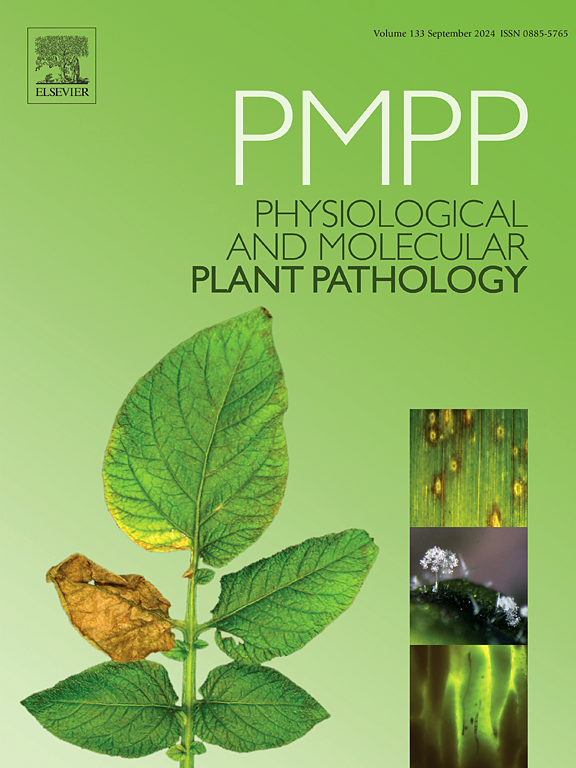Biogenic silver nanoparticles to control rice blast caused by Magnaporthe oryzae
IF 2.8
3区 农林科学
Q2 PLANT SCIENCES
引用次数: 0
Abstract
Rice blast caused by Magnaporthe oryzae is one of the most important diseases, increasing economic threats to rice production across the globe. This study was designed to evaluate the efficacy of biogenic silver nanoparticles (AgNPs) as a preventive measure to mitigate rice blast. The AgNPs were biologically synthesized by using the bacterial culture supernatant of Kocuria species, and their synthesis was confirmed by UV–visible spectroscopy (UV–vis) with maximum absorbance at 420 nm. The biogenic AgNPs were further characterized with Fourier-Transform Infrared Spectroscopy (FTIR) and X-ray Diffraction (XRD). FTIR spectra indicated the presence of C ≡ N, C = C, and N-H stretching. XRD indicated a distinct crystallite nature well as the average nanoparticle size as 3.07 nm. Scanning electron microscope (SEM) images revealed agglomerated and irregular shaped nanoparticles. In vitro antifungal activity showed that mycelial growth and conidial germination of M. oryzae significantly decreased by AgNPs. Their antifungal effects were greater than propiconazole, a demethylation inhibitor fungicide commonly used for rice diseases. In the greenhouse experiment, symptoms of rice blast significantly reduced by 28.53 %, 41.02 % and 78.23 % less in lesion development at 10, 20, and 30 ppm AgNP foliar application, respectively, as compared to the untreated control. This study introduces a novel approach to combating rice blast disease by AgNPs, biosynthesized by Kocuria species. The research highlights both the environmental outcomes of this green synthesis method and its effectiveness against M. oryzae, offering a sustainable alternative to traditional fungicides.

求助全文
约1分钟内获得全文
求助全文
来源期刊
CiteScore
4.30
自引率
7.40%
发文量
130
审稿时长
38 days
期刊介绍:
Physiological and Molecular Plant Pathology provides an International forum for original research papers, reviews, and commentaries on all aspects of the molecular biology, biochemistry, physiology, histology and cytology, genetics and evolution of plant-microbe interactions.
Papers on all kinds of infective pathogen, including viruses, prokaryotes, fungi, and nematodes, as well as mutualistic organisms such as Rhizobium and mycorrhyzal fungi, are acceptable as long as they have a bearing on the interaction between pathogen and plant.

 求助内容:
求助内容: 应助结果提醒方式:
应助结果提醒方式:


